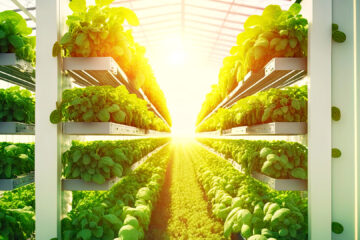
Navigating the Future: Understanding and Addressing Global Warming
Global warming, marked by Earth’s rising surface temperatures, is one of humanity’s most pressing challenges in this era of technological progress and global connection. It’s a complex issue rooted in human activities that have altered our atmosphere over centuries. This phenomenon, driven by greenhouse gases, has significant environmental and societal impacts. The scope of this writing aims to demystify global warming by examining its scientific basis, human causes, and potential future impacts if current trends continue. We will explore the consequences, including rising sea levels, extreme weather events, and biodiversity loss, and their profound implications for human health, economies, and communities.
The focus extends to remedial actions, highlighting technological innovations, policy interventions, and grassroots movements. These strategies illustrate the diverse and potent tools for mitigating and adapting to global warming. As we delve into this issue, we must recognize that our response to global warming today will shape our future. This exploration aims to empower and inspire action, balancing realism with optimism in the face of a worldwide challenge.

The Science of Global Warming
Global warming, a phenomenon changing the Earth’s climate, stems from the greenhouse effect — a natural process essential for life on our planet. This process begins when the Earth’s surface absorbs sunlight, converting it into heat. While some of this heat escapes back into space, greenhouse gases like carbon dioxide, methane, and nitrous oxide trap and reradiate a portion, warming the planet.
Historically, these gases have maintained Earth’s temperature at habitable levels. However, human activities, primarily fossil fuel burning and deforestation, have enormously boosted greenhouse gas concentrations in the atmosphere. Global warming is caused by the major increase in Carbon Dioxide levels, which has reached unprecedented levels in at least 800,000 years. The direct sources of CO2 emissions are coal, oil, natural gas and hydrocarbons used for generating energy and transportation. Deforestation further exacerbates this increase by cutting down trees that absorb carbon dioxide.
The consequences of this enhanced greenhouse effect are evident in global temperature trends. The past decade was the warmest on record, with global temperatures climbing about 1 degree Celsius higher since the last five decades. This warming is unevenly distributed, with the Arctic experiencing the most dramatic changes, warming twice as fast as the global average.
Ocean temperatures have also risen, with the upper 100 meters (about 328 feet) of ocean warming at more than 0.33 degrees Celsius since 1969. Warmer oceans contribute to rising sea levels through melting ice caps, glaciers and heat expansion. The global average sea level has increased about 8 inches in the last century, with the rate of rise almost doubling in the previous two decades.
Scientific consensus underscores that human activities are the primary drivers of recent global warming. Understanding the science behind global warming is crucial for addressing its causes and mitigating its impacts. As we delve deeper into the human factors contributing to this phenomenon, it becomes clear that addressing global warming requires a concerted effort to decrease the emissions of greenhouse gases and shift to more sustainable practices.
Human Causes of Global Warming
The escalation of global warming primarily stems from human activities that amplify the natural greenhouse effect. Additionally, burning fossil fuels results in the release of substantial amounts of carbon dioxide. These emissions originate from power plants, automobiles, and industrial processes, marking a significant shift in the carbon cycle balance.
Widespread deforestation for agriculture, urban development, and timber harvesting reduces this capacity, releasing large amounts of carbon dioxide as trees are cut or burned.
Agricultural practices also contribute significantly to global warming. Culturing rice paddies and raising livestock, particularly cattle, emit methane, another potent greenhouse gas. Using synthetic fertilizers increases nitrous oxide levels, further exacerbating the greenhouse effect.
Urbanization compounds these effects. As cities expand, they displace natural landscapes and increase energy demand, predominantly met through fossil fuels. With their concrete and asphalt surfaces, urban areas engross and re-emit the solar heat more than natural landscapes, known as the urban heat island effect.
Industrialization plays a dual role. While it has propelled economic growth and development, it has also increased greenhouse gas emissions. Manufacturing cement, steel, and chemicals, among other industrial processes, are significant sources of carbon dioxide.
Intertwined with modern civilization’s growth and development, these human activities underscore the complex relationship between human progress and environmental impact. As we recognize these causes, it becomes evident that mitigating global warming necessitates a transformative approach towards energy production, land use, and industrial processes, steering towards sustainability and environmental responsibility.
Current and Future Effects on the Environment
Global warming’s impact on the environment is profound and far-reaching, affecting ecosystems, weather patterns, and the fabric of the Earth’s natural systems. One of the most visible consequences is the rise in global temperatures. This increase disrupts weather patterns, leading to more frequent and severe heat waves, droughts, and intense storms. Such extremes not only damage ecosystems but also challenge the resilience of human societies.
The polar regions are experiencing some of the most dramatic effects. Arctic sea ice is diminishing at a startling rate, affecting polar ecosystems and wildlife. This ice loss also contributes to a feedback loop, where dark ocean water absorbs more solar radiation than white ice, accelerating regional warming.
Rising sea levels, fueled by icebergs and glaciers melting, pose significant risks to coastal communities and habitats. Low-lying islands and coastal cities face the threat of flooding, while saltwater intrusion endangers freshwater resources and agricultural lands.
Ocean acidification, a lesser-known but equally critical consequence, results from the ocean’s absorption of increased atmospheric carbon dioxide. This chemical change threatens marine life, specifically organisms such as corals, molluscs, and some plankton species. The disruption of these foundational species has cascading effects through marine food webs.
Global warming also impacts biodiversity, leading to shifts in species distributions, altered breeding and migration patterns, and increased vulnerability to diseases. These changes threaten the survival of some species and the balance of ecosystems, potentially leading to irreversible losses in biodiversity.
Continuing current warming trends could lead to more severe environmental impacts in future. Ecosystems may face increased stress, leading to widespread habitat loss and species extinction. The stability of vital systems, such as the Amazon rainforest and polar ice sheets, could be compromised, with far-reaching implications for the planet’s climate and life support systems. Addressing global warming thus becomes a matter of reducing greenhouse gas emissions, preserving the Earth’s ecological balance and safeguarding the natural world for future generations.
Effects on Human Life
Global warming’s impact extends far beyond the environment, profoundly affecting human life in numerous ways. One of the most immediate effects is on health. Rising temperatures increase heat-related health complaints and death tolls, especially in urban areas where the heat island effect exacerbates conditions. Additionally, changes in climate patterns influence the spread of various vector-borne infections such as Lyme, Chikungunya, Lymphatic filariasis, Malaria and Dengue as warmer temperatures expand the habitats of disease-carrying insects.
The agricultural sector, vital for human sustenance, faces significant challenges due to global warming. Shifts in weather patterns, unpredictable rainfall, and increased occurrences of droughts and floods adversely affect crop yields. This instability threatens food security, particularly in regions heavily reliant on agriculture for food and the economy.
Global warming also has a pronounced impact on water resources. Melting glaciers and changing precipitation patterns disrupt freshwater availability, leading to shortages and affecting millions worldwide. This situation is exacerbated in areas already facing water scarcity.
Economically, the effects of global warming are vast and varied. Increased harshness of extreme weather occurrences such as hurricanes, floods, and wildfires leads to substantial costs in terms of damage to infrastructure, housing, and critical facilities. Insurance premiums may rise, and some areas could become uninsurable due to high risk.
Socially, global warming can exacerbate inequalities and lead to displacement. Low-income communities and those in vulnerable areas are often hit hardest, lacking the resources to adapt or recover from climate-related disasters. This situation can lead to climate refugees, as people are forced to migrate in search of habitable conditions.
The impacts of global warming on human life are interconnected, affecting health, livelihoods, water and food security, economic stability, and social structures. Addressing these challenges requires a holistic approach, integrating climate resilience into planning and policies and ensuring vulnerable communities receive support and resources to adapt. As the planet warms, the need for proactive and inclusive solutions becomes increasingly urgent to protect and improve the quality of human life in the face of climate change.
Mitigation and Adaptation Strategies
Addressing global warming necessitates a multifaceted approach, blending mitigation and adaptation strategies. Key to mitigation is reducing greenhouse gas emissions, primarily through a shift to renewable energy sources like solar, wind, and hydroelectric power. Enhancing energy efficiency in buildings, transportation, and manufacturing also plays a crucial role.
In terms of adaptation, communities and ecosystems must adapt to the changing climate, which involves designing competent infrastructure to withstand extreme weather circumstances and rising sea levels. Sustainable agricultural practices and water conservation techniques are essential to adapt to shifting weather patterns.
Policy measures are instrumental in driving change. International agreements, like the Paris Agreement, set targets for emission reductions, while carbon pricing mechanisms incentivize low-carbon technologies. Investing in green technology and supporting climate research are vital steps towards a sustainable future. Collectively, these strategies can steer the world towards a path of sustainability, balancing ecological integrity with human development.
The Role of Technology and Innovation
Technology and innovation are pivotal in combating global warming. Advances in climate science, including more accurate predictive models, are crucial for understanding and planning for climate change impacts. Innovative carbon capture and storage technologies offer promising avenues for reducing atmospheric CO2 levels. Furthermore, the development of green technology is reshaping energy production, transportation, and urban development, steering these sectors towards sustainability. Smart cities, with efficient energy use and reduced emissions, exemplify this shift. These technological advancements and a commitment to research and development are key to devising effective strategies against global warming, demonstrating the human race’s ability for steadiness and adaptability in the face of environmental challenges.
Role of Education and Awareness in Driving Change
Global and community action is essential in the fight against global warming. International cooperation, exemplified by the Paris Agreement, showcases the collective commitment of nations to reduce greenhouse gas emissions and limit rising temperatures. At the community level, grassroots movements and local initiatives are vital in driving change from the ground up. These efforts often focus on sustainable practices, renewable energy adoption, and raising awareness about climate issues. Educational programs are key to fostering a deeper understanding of global warming and its impacts. This blend of international coordination and local action creates a powerful force, underscoring the importance of collective responsibility and action in addressing the challenges of global warming.
In conclusion, global warming presents a formidable challenge, yet it also offers an opportunity for unprecedented global cooperation and innovation. Understanding its scientific basis and human causes is crucial in developing effective responses. Its impacts on the environment and human life underscore the urgency of our collective action. The path forward involves a combination of mitigation strategies, like transitioning to renewable energy and enhancing energy efficiency, and adaptation measures, such as building resilient infrastructures and sustainable agricultural practices.
Technological advancements and grassroots movements are vital in driving change, demonstrating human ingenuity and resilience. International agreements like the Paris Agreement highlight the power of collective commitment. This journey towards a sustainable future requires unwavering dedication, creativity, and cooperation. It is a challenge that humanity must embrace with optimism, recognizing that our actions today will shape the world for generations to come.
References:
- This Changes Everything: Capitalism vs The Climate by Naomi Klein – addresses the interplay between environmental crises and economic systems, particularly focusing on how current capitalist structures contribute to global warming.
- The Sixth Extinction: An Unnatural History by Elizabeth Kolbert – explores the ongoing sixth mass extinction, largely due to human-induced changes, including global warming, and its impact on biodiversity.
- The Uninhabitable Earth: Life After Warming by David Wallace-Wells – a vivid portrayal of the potential future impacts of climate change if current trends continue, emphasizing the urgent need for action.
- Field Notes from a Catastrophe: Man, Nature, and Climate Change by Elizabeth Kolbert – an accessible overview of the science of climate change and its real-world impacts.
- Drawdown: The Most Comprehensive Plan Ever Proposed to Reverse Global Warming edited by Paul Hawken – a compilation of research strategies that could collectively reverse global warming.
- The Great Derangement: Climate Change and the Unthinkable by Amitav Ghosh – discusses why modern literature and politics have failed to address climate change effectively.









